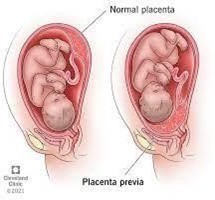A nurse is caring for a newborn whose mother is positive for the hepatitis B surface antigen. Which of the following treatments should the infant receive?
The hepatitis B vaccine is monthly until the newborn tests negative for the hepatitis B surface antigen
Hepatitis B immune globulin and the hepatitis B vaccine within 12 hours of birth
Hepatitis B immune globulin at 1 week followed by the hepatitis B vaccine monthly for 6 months
The hepatitis B vaccine at 24 hours followed by hepatitis B immune globulin every 12 hours for 3 days
The Correct Answer is B
Choice A rationale:
Administering the hepatitis B vaccine monthly until the newborn tests negative for the hepatitis B surface antigen is not the appropriate treatment for a newborn whose mother is positive for the hepatitis B surface antigen. Immediate intervention is required to prevent transmission.
Choice B rationale:
The newborn of a mother who is positive for the hepatitis B surface antigen should receive hepatitis B immune globulin (HBIG) and the hepatitis B vaccine within 12 hours of birth. HBIG provides passive immunity to the baby while the vaccine stimulates active immunity.
Choice C rationale:
Administering hepatitis B immune globulin for 1 week followed by the hepatitis B vaccine monthly for 6 months is not the correct treatment plan. Immediate intervention is necessary to prevent transmission to the newborn.
Choice D rationale:
Administering the hepatitis B vaccine at 24 hours followed by hepatitis B immune globulin every 12 hours for 3 days is not the appropriate treatment. Hepatitis B immune globulin should be given within 12 hours of birth, not over several days.
Nursing Test Bank
Naxlex Comprehensive Predictor Exams
Related Questions
Correct Answer is C
Explanation
Choice A rationale:
A gynaecoid pelvis is considered the most favorable pelvic shape for childbirth and is not a contributing cause of difficult, prolonged labor.
Choice B rationale:
A longitudinal fetal lie (baby's spine aligned with the mother's spine) is a normal and favorable presentation for birth and is not a contributing cause of difficult, prolonged labor.
Choice C rationale:
A persistent occiput posterior position (baby's head facing the mother's abdomen instead of her back) can be a contributing cause of difficult, prolonged labor and may lead to a severe backache for the mother.
Choice D rationale:
Fetal attitude in general flexion (baby's head flexed forward, chin to chest) is a normal and favorable presentation for birth and is not a contributing cause of difficult, prolonged labor.
Correct Answer is D
Explanation
Choice A rationale: Applying ice to the perineal area is not indicated in the case of suspected placenta previa. Placenta previa is related to the location of the placenta in the uterus and is not affected by the perineal area. Ice is commonly used for perineal discomfort after vaginal delivery but is not appropriate for placenta previa.
Choice B rationale: When a client is suspected to have placenta previa, a vaginal exam should be avoided because it can cause trauma to the placenta, leading to significant bleeding. Placenta previa is a condition where the placenta covers part or all of the cervix, and any disruption of the placenta can result in bleeding, which poses a risk to both the mother and the baby. Therefore, a vaginal exam is contraindicated in this situation.
Choice C rationale: Performing a rectal exam is also not appropriate for a client with suspected placenta previa. Rectal exams do not provide any relevant information about the placenta's location, and they can potentially cause discomfort or bleeding in this situation.
Choice D rationale: Applying an external fetal monitor is an appropriate action when caring for a pregnant client, regardless of whether there is a suspected placenta previa. The external fetal monitor is used to assess the baby's heart rate and uterine contractions and is a routine part of prenatal care. However, it does not specifically address the issue of placenta previa. The nurse should be vigilant for any signs of bleeding or changes in fetal heart rate pattern, which may indicate placental issues, and report them promptly for further evaluation and management.

Whether you are a student looking to ace your exams or a practicing nurse seeking to enhance your expertise , our nursing education contents will empower you with the confidence and competence to make a difference in the lives of patients and become a respected leader in the healthcare field.
Visit Naxlex, invest in your future and unlock endless possibilities with our unparalleled nursing education contents today
Report Wrong Answer on the Current Question
Do you disagree with the answer? If yes, what is your expected answer? Explain.
Kindly be descriptive with the issue you are facing.
